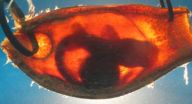(Press-News.org) Students everywhere, put down those highlighters and pick up some flashcards! Some of the most popular study strategies — such as highlighting and even rereading — don't show much promise for improving student learning, according to a new report published in Psychological Science in the Public Interest, a journal of the Association for Psychological Science.
In the report, John Dunlosky of Kent State University and a team of distinguished psychological scientists review the scientific evidence for ten learning techniques commonly used by students.
"Schools and parents spend a great deal of money on technology and programs to improve student achievement, even though evidence often isn't available to firmly establish that they work," says Dunlosky. "We wanted to take a comprehensive look at promising strategies now, in order to direct teachers, students and parents to the strategies that are effective, yet underused."
Based on the available evidence, the researchers provide recommendations about the applicability and usefulness of each technique.
While the ten learning techniques vary widely in effectiveness, two strategies — practice testing and distributed practice — made the grade, receiving the highest overall utility rating.
Most students are probably familiar with practice testing, having used flash cards or answered the questions at the end of a textbook chapter. Students who prefer last-minute cram sessions, however, may not be as familiar with the idea of distributed practice.
Dunlosky and colleagues report that spreading out your studying over time and quizzing yourself on material before the big test are highly effective learning strategies. Both techniques have been shown to boost students' performance across many different kinds of tests, and their effectiveness has been repeatedly demonstrated for students of all ages.
In contrast, five of the techniques received a low utility rating from the researchers. Notably, these techniques are some of the most common learning strategies used by students, including summarization, highlighting and underlining, and rereading.
"I was shocked that some strategies that students use a lot — such as rereading and highlighting — seem to provide minimal benefits to their learning and performance. By just replacing rereading with delayed retrieval practice, students would benefit," says Dunlosky.
So why don't they? Why aren't students and teachers using the learning strategies that have been shown to be effective and inexpensive?
Dunlosky and colleagues found that the answer may have to do with how future teachers are taught.
"These strategies are largely overlooked in the educational psychology textbooks that beginning teachers read, so they don't get a good introduction to them or how to use them while teaching," Dunlosky explains. As a result, teachers are less likely to fully exploit some of these easy-to-use and effective techniques.
To help address this gap, the researchers organized their report in distinct modules, so that teachers can quickly decide whether each technique will potentially benefit his or her students and researchers can easily set an agenda on what we still need to know about the efficacy of these strategies.
"The learning techniques described in this monograph will not be a panacea for improving achievement for all students, and perhaps obviously, they will benefit only students who are motivated and capable of using them," Dunlosky and colleagues note. "Nevertheless, when used properly, we suspect that they will produce meaningful gains in performance in the classroom, on achievement tests, and on many tasks encountered across the life span."
###
The report, "Improving Students' Learning With Effective Learning Techniques: Promising Directions From Cognitive and Educational Psychology," is published in the January 2013 issue of Psychological Science in the Public Interest and is authored by John Dunlosky and Katherine A. Rawson of Kent State University, Elizabeth J. Marsh of Duke University, Mitchell J. Nathan of the University of Wisconsin-Madison, and Daniel T. Willingham of the University of Virginia. The research included in the report was supported by a Bridging Brain, Mind and Behavior Collaborative Award through the James S. McDonnell Foundation's 21st Century Science Initiative.
The report also features an editorial written by Henry L. Roediger III of Washington University in St. Louis.
The full report and the accompanying editorial are available free online.
For more information about this study, please contact:
John Dunlosky at jdunlosk@kent.edu.
Psychological Science in the Public Interest is a journal of the Association for Psychological Science. It publishes an eclectic mix of thought-provoking articles on the latest important advances in psychology. For a copy of the article "Improving Students' Learning With Effective Learning Techniques: Promising Directions From Cognitive and Educational Psychology" and access to other Psychological Science in the Public Interest research findings, please contact Anna Mikulak. END
January 10, 2013 (Toronto) - Cutting in and weaving, speeding, and hostile displays are among the top online complaints posted by drivers, according to a new study by the Centre for Addiction and Mental Health (CAMH) recently published in an online issue of Accident Analysis and Prevention.
Driver aggression is a major safety concern and researchers estimate this behaviour is a factor in nearly half of all motor vehicle collisions. Identifying the underlying causes and strategies for preventing driver aggression continues to be a priority.
CAMH researcher Dr. Christine ...
The increase in the speed of stock trading from microseconds to nanoseconds leads to an increase in order cancellation, but little else of value to investors and the general public, says research by a University of Illinois business professor.
According to a forthcoming study by Mao Ye, a professor of finance at Illinois, the arms race in speed at the sub-millisecond level of stock trading is a "purely positional game" in which a trader's payoff depends on transaction speed relative to other traders.
"There are lots of extreme views about high-frequency trading, but ...
A new study, funded in part by the National Institutes of Health (NIH) and Health Resources and Services Administration, and published in the January 2013 issue of Liver Transplantation, a journal of the American Association for the Study of Liver Diseases (AASLD), found that the non-use of donor livers climbed through 2010 due to a worsening of donor liver quality, primarily from donation following cardiac death. Diabetes, donor age, and body mass index (BMI) were also linked to a decrease in use of organs.
"For patients with end-stage liver disease, transplantation ...
URBANA – Perennial biofuel crops such as miscanthus, whose high yields have led them to be considered an eventual alternative to corn in producing ethanol, are now shown to have another beneficial characteristic–the ability to reduce the escape of nitrogen in the environment. In a 4-year University of Illinois study that compared miscanthus, switchgrass, and mixed prairie species to typical corn-corn-soybean rotations, each of the perennial crops were highly efficient at reducing nitrogen losses, with miscanthus having the greatest yield.
"Our results clearly demonstrate ...
Welcome to "This Week in Blood," a weekly snapshot of the hottest studies from each week's issue of Blood, the official journal of the American Society of Hematology (ASH), hand-picked by Blood Editor-in-Chief Bob Löwenberg, MD, and Deputy Editor Nancy Berliner, MD.
Systemic delivery of a TLR7 agonist in combination with radiation primes durable anti-tumor immune responses in mouse models of lymphoma, Dovedi et al.
This week's plenary paper offers a promising potential new immunotherapeutic modality for the treatment of lymphoma. The authors present convincing data ...
EAST LANSING, Mich. — As cancer treatment in pill form transforms how care is delivered, a new Michigan State University study underscores the challenges patients face in administering their own chemotherapy outside the supervised environment of a cancer clinic.
Chemotherapy pills can target specific cancers better than some traditional intravenous drugs, said Sandra Spoelstra, an MSU assistant professor of nursing who led the study. But they also can be difficult for patients to take.
"Prescriptions for some oral pills have complex instructions," Spoelstra said. ...
DURHAM, N.C. -- Duke researchers are looking to genomic technologies – not the isolation of bacteria or viruses – to quickly detect and diagnose infectious diseases such as the flu and staph.
Two studies appearing online Jan. 9, 2013, both in the journal PLOS ONE, show how a pattern of genomic information among infected individuals can be used to accurately pinpoint the cause of infection.
"Traditional diagnostic tests for infectious diseases rely on detecting the specific illness-causing pathogens. So you only find what you're looking for," said Geoffrey Ginsburg, ...
SAN DIEGO – Apparent stem cell transplant success in mice may hold promise for people with amyotrophic lateral sclerosis (ALS), or Lou Gehrig's disease. The results of the study were released today and will be presented at the American Academy of Neurology's 65th Annual Meeting in San Diego, March 16 to 23, 2013.
"There have been remarkable strides in stem cell transplantation when it comes to other diseases, such as cancer and heart failure," said study author Stefania Corti, MD, PhD, with the University of Milan in Italy and a member of the American Academy of Neurology. ...
VIDEO:
This is a video clip of a bamboo shark embryo responding to an electrical stimulus by ceasing gill movements.
Click here for more information.
Baby sharks still developing in their egg cases can sense when predators are near, and keep very still to avoid being detected, according to research published January 9 in the open access journal PLOS ONE by Ryan Kempster from the University of Western Australia and colleagues.
Adult sharks are known to use highly sensitive ...
You may have to be over a certain age to be a contestant on "Deal or No Deal", but children as young as five start to maximize their profits - in cookies - when making decisions similar to those on the show, according to research published January 9 in the open access journal PLOS ONE by Valerie Dufour and colleagues from the National Center for Scientific Research in France.
Children aged 3-9 were given a cookie and presented the option to either keep it or exchange it for one of 6 identical cups containing cookies. The cookies in the cups could be larger, smaller or ...



